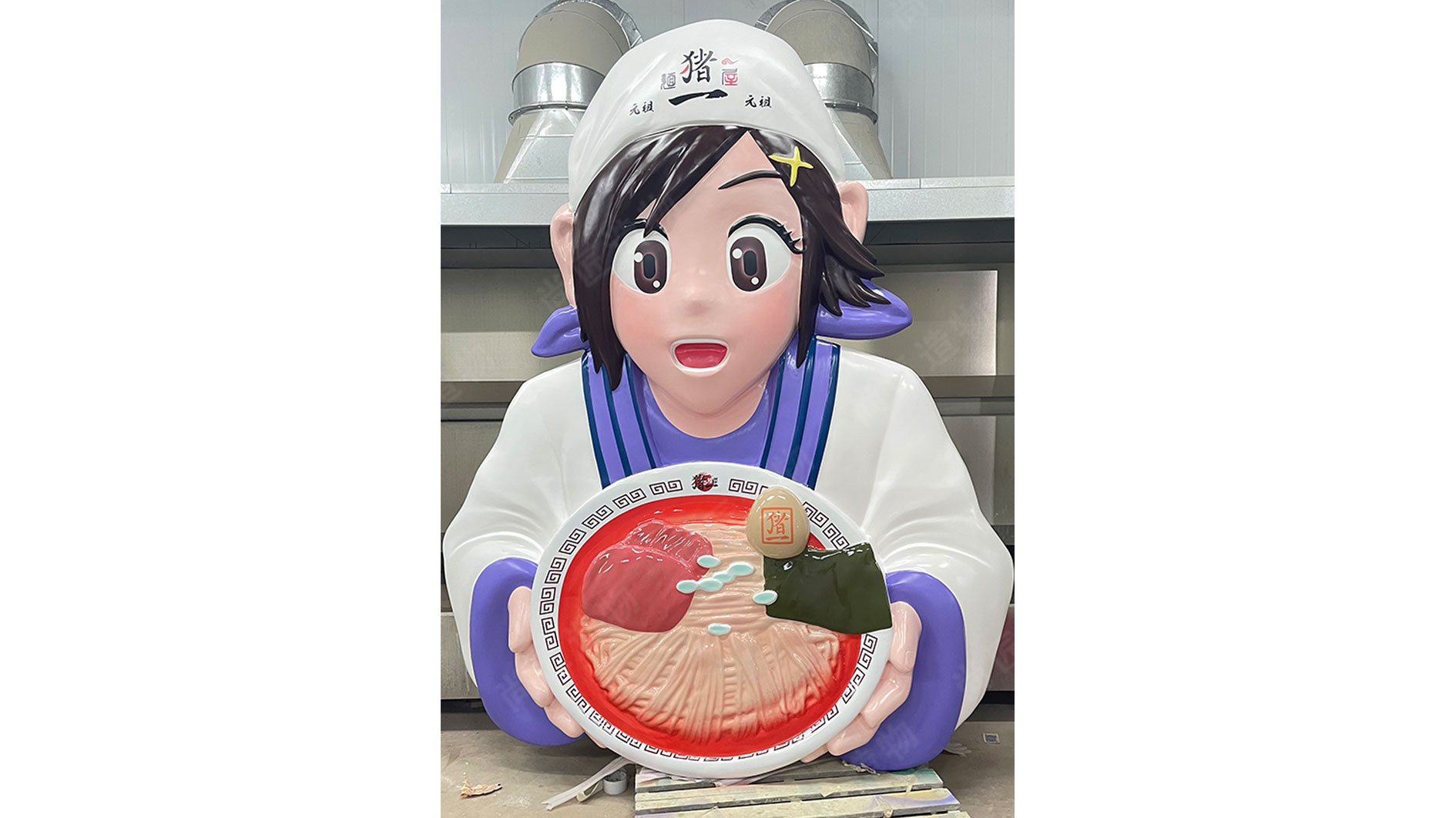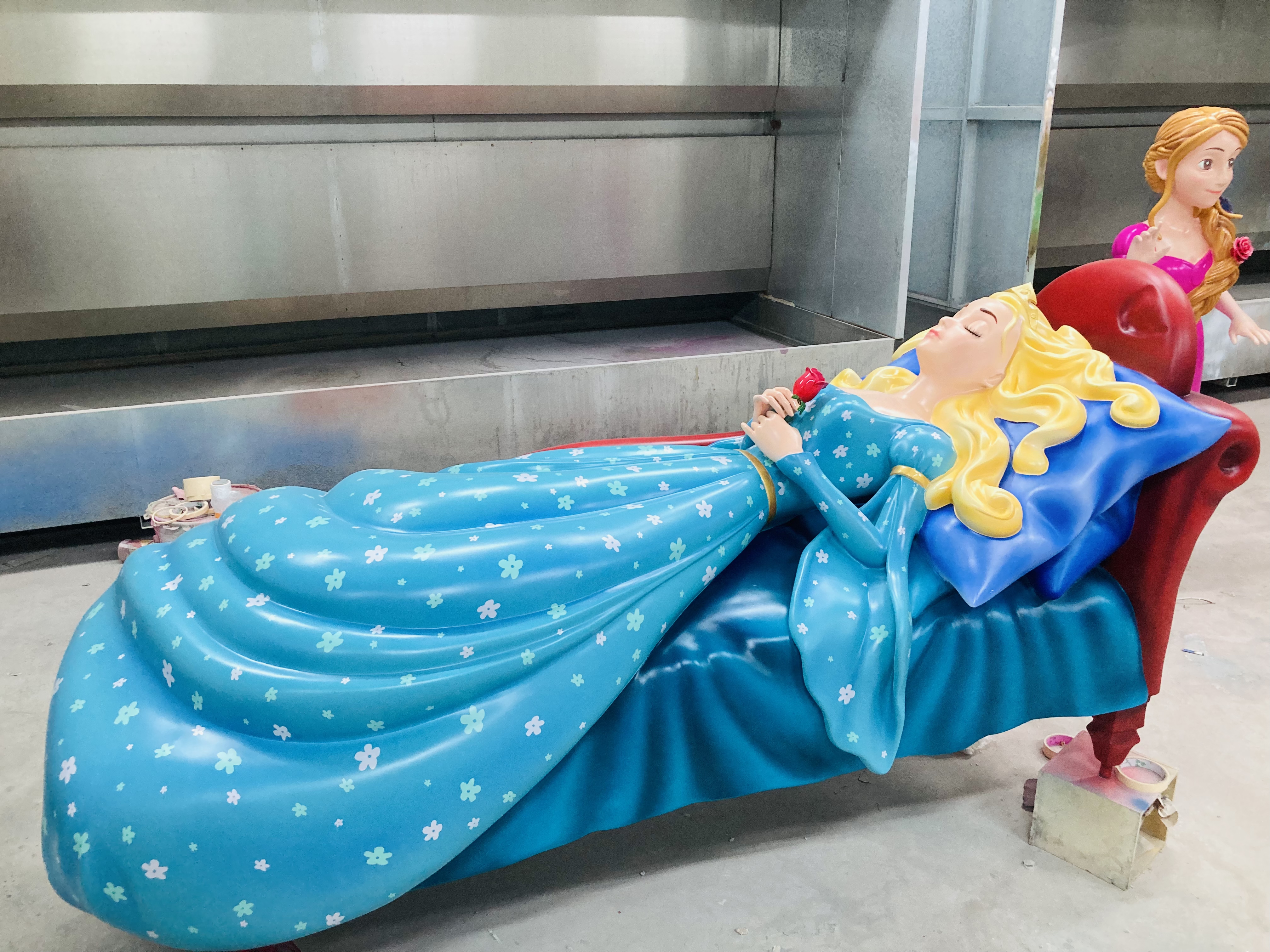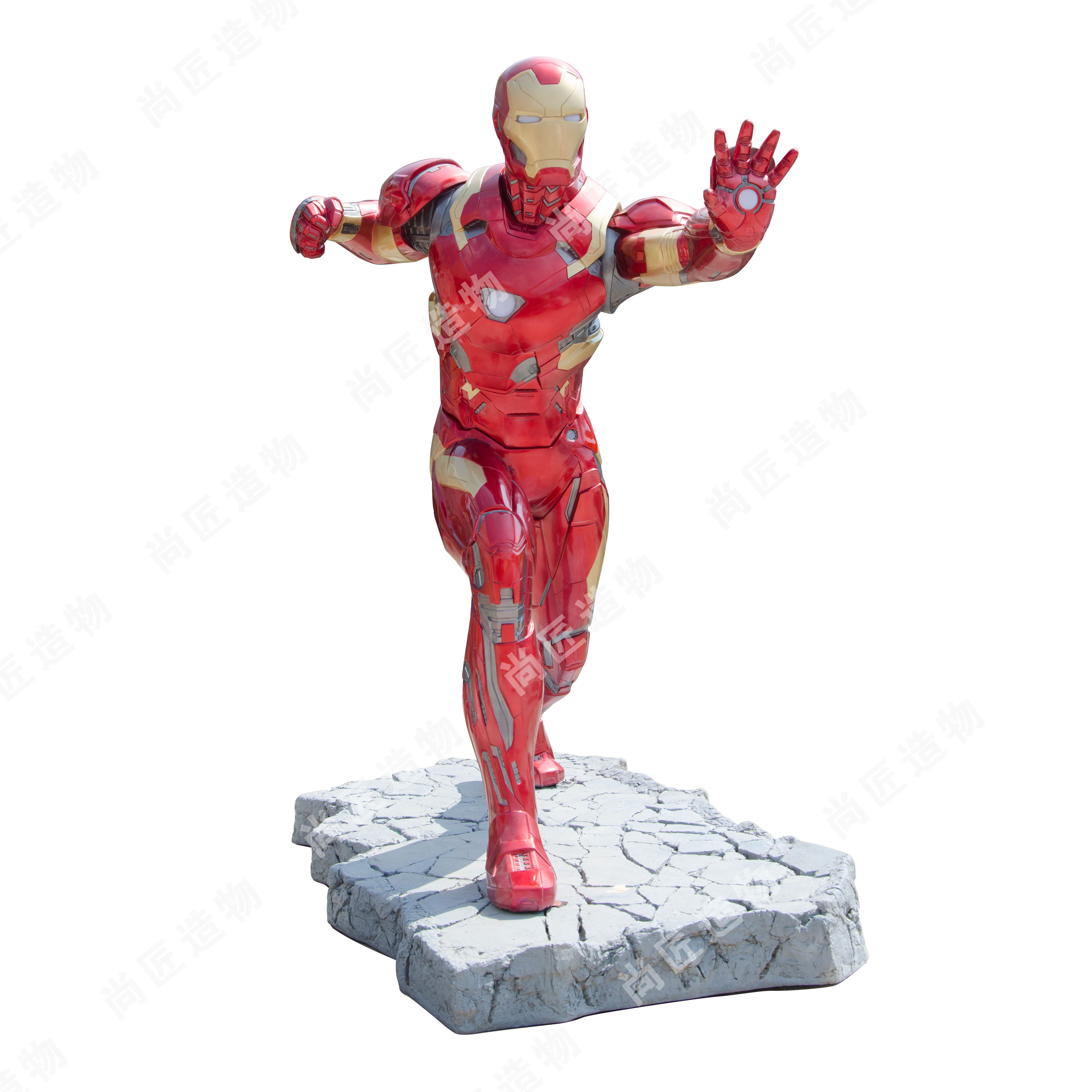Key Takeaways
FRP sculptures are reshaping public art through material innovation and design flexibility. Fiberglass-reinforced polymer (FRP) offers a unique combination of durability and lightweight properties, enabling artists to create large-scale installations without structural limitations. For example, a 15-foot FRP sculpture weighs up to 70% less than traditional bronze equivalents, reducing transportation and installation costs while maintaining weather resistance.
| Feature | Traditional Materials | FRP |
|---|---|---|
| Weight | Heavy (e.g., bronze) | Lightweight |
| Weather Resistance | Prone to corrosion | UV-stable coatings |
| Customization | Limited | High precision molding |
| Maintenance Cost | Annual upkeep required | Minimal intervention |
"FRP allows us to experiment with dynamic shapes that would collapse under their own weight in stone or metal," notes sculptor Elena Vázquez, whose Cartoon sculpture series in Barcelona showcases the material’s playful potential.
Three critical advancements drive FRP’s adoption:
- Surface Finishing: Electrostatic coatings replicate bronze patinas with 95% visual accuracy.
- Modular Design: Interlocking segments simplify large installations, as seen in Singapore’s 32-piece Urban Flow exhibit.
- Interactive Elements: Embedded sensors in FRP bases enable motion-activated lighting, merging art with smart city infrastructure.
For municipalities, FRP provides 40–60% cost savings over a decade compared to metal alternatives. Tip: Regular inspections every 18 months extend FRP artwork lifespan by addressing minor surface abrasions before they compromise structural layers.

FRP Sculptures Redefine Public Art Design
The integration of fiberglass-reinforced polymer (https://en.artmovr.com/) designs benefit from FRP’s ability to balance strength and motion, allowing dynamic pieces to withstand environmental stressors.
Urban planners increasingly favor FRP for its cost efficiency and adaptability. Complex geometries—once impractical with bronze or concrete—are now achievable, fostering bold artistic statements in parks, transit hubs, and waterfronts. The material’s corrosion resistance also ensures longevity in diverse climates, reducing maintenance costs over time. As cities prioritize interactive and accessible art, FRP’s versatility supports everything from textured murals to immersive, walk-through installations. This evolution reflects a broader trend where functionality and aesthetic ambition coexist, reshaping public spaces into dynamic canvases for communal engagement.

Lightweight Fiberglass Art Durability Secrets
The longevity of Fiberglass sculpture relies on advanced material engineering that balances weight reduction with structural resilience. Unlike traditional stone or metal, fiberglass-reinforced polymer (FRP) combines polyester resins with layered glass fibers, creating a matrix resistant to corrosion, UV degradation, and extreme weather fluctuations. This composite structure prevents cracking in freeze-thaw cycles—a critical advantage for outdoor installations—while maintaining 80% less mass than bronze equivalents.
Manufacturers enhance durability through gelcoat finishes, which act as a protective barrier against moisture infiltration and surface erosion. For high-traffic areas, sculptors integrate anti-graffiti coatings and impact-resistant additives without compromising artistic detail. Recent advancements include nanotechnology-infused resins that self-heal minor abrasions, extending artwork lifespans beyond 50 years in harsh urban environments.
These innovations address a key challenge in public art: maintaining aesthetic integrity while reducing maintenance costs. As cities prioritize sustainable infrastructure, FRP’s recyclability further solidifies its role in durable, eco-conscious design. This technical evolution supports the broader shift toward adaptable artworks that withstand both physical stresses and changing climate patterns, aligning with global urban resilience initiatives.

Bronze-Like Finishes in Modern FRP Creations
Modern FRP sculptures achieve striking metallic aesthetics through advanced surface treatments that mimic traditional bronze casting. By layering pigmented gel coats and applying specialized polishing techniques, artists create depth and patina indistinguishable from aged bronze. This process begins with a base layer of glass-reinforced polymer, followed by hand-applied metallic powders suspended in resin. Unlike stainless steel sculpture, which relies on industrial polishing, FRP finishes allow precise control over color gradients and oxidation effects—from verdigris accents to warm gold undertones.
The lightweight nature of fiberglass enables larger, more intricate designs than solid metal permits, while maintaining resistance to weathering and vandalism. Recent innovations include UV-stable coatings that preserve finishes for decades without tarnishing. For example, public installations in coastal cities now feature FRP “bronze” statues that withstand saltwater corrosion, a feat impossible with conventional bronze. This blend of classic elegance and modern durability positions FRP as a pragmatic choice for municipalities balancing artistic impact with long-term maintenance costs.

Interactive Sculptures Enhancing Urban Landscapes
The integration of interactive FRP sculptures into urban environments marks a dynamic shift in how public art engages communities. Fiberglass-reinforced polymer’s lightweight nature allows artists to design large-scale installations that invite tactile interaction without structural compromise. Unlike traditional materials, FRP withstands frequent touch, weather fluctuations, and vandalism, making it ideal for high-traffic areas like parks, plazas, and transit hubs. Cities worldwide now feature kinetic sculptures with moving parts activated by wind or touch, as well as sound-responsive pieces that harmonize with ambient noise.
A key innovation lies in embedding technology within FRP frameworks. For example, solar-powered LED systems can illuminate sculptures at night, creating immersive experiences that evolve with the time of day. Some installations even incorporate augmented reality (AR) interfaces, enabling visitors to access digital narratives via smartphones. These interactive elements transform static art into participatory landmarks, fostering social connection and placemaking.
Notably, FRP’s adaptability supports realistic sculpture detailing while maintaining functionality. Sculptures mimicking organic textures—like flowing fabric or weathered stone—double as seating or shade structures, blending aesthetics with civic utility. This duality aligns with modern urban planning goals, where art serves both cultural and practical roles in shaping livable, engaging cities.

Global Adoption of Fiberglass Composite Art
The use of fiberglass-reinforced polymer (FRP) in public art has expanded rapidly across continents, driven by its adaptability to diverse climates and cultural contexts. Cities like Dubai, Singapore, and Barcelona now feature FRP sculptures that withstand extreme heat, humidity, and coastal salt corrosion—challenges traditional materials often fail to address. Municipalities favor FRP not only for its weather resistance but also for its logistical advantages. Lightweight designs simplify transportation and installation, enabling artists to deploy large-scale works in crowded urban centers without heavy machinery.
This global shift is further fueled by FRP’s ability to mimic traditional mediums. For instance, IP character sculptures in Tokyo’s themed parks and Johannesburg’s heritage monuments demonstrate how fiberglass composites replicate bronze or stone textures while reducing maintenance costs. Collaborative projects between artists and engineers have also spurred innovation, such as modular FRP installations in Berlin that audiences can reconfigure seasonally. As cities prioritize sustainable, interactive art, fiberglass composites emerge as a unifying medium—bridging aesthetic traditions with 21st-century urban demands.
Cost-Effective FRP Solutions for Public Spaces
Fiberglass-reinforced polymer (FRP) sculptures are redefining budget considerations for public art projects without compromising quality. Unlike traditional materials such as bronze or stone, FRP composites reduce production costs through faster molding processes and lower material waste. Their lightweight nature further cuts expenses by minimizing transportation fees and simplifying installation—cranes or heavy machinery are often unnecessary. Maintenance costs also remain low, as FRP resists corrosion, UV degradation, and weather-related wear, even in high-traffic urban environments.
Cities increasingly leverage these savings to expand artistic programming. For example, modular FRP designs allow municipalities to commission large-scale installations in phases, aligning with fiscal timelines. Replicable molds enable artists to create series of identical or variations of sculptures at reduced per-unit costs, making rotating public exhibits financially viable. Additionally, FRP’s adaptability supports integrating functional elements—such as seating or shade structures—into decorative pieces, maximizing value for community spaces. This fiscal flexibility ensures that aesthetic enhancements remain accessible to diverse urban budgets, fostering broader adoption of dynamic public art.
Innovative Techniques in FRP Sculpture Crafting
Modern FRP sculpture creation relies on advanced fabrication methods that balance precision and artistic expression. Fiberglass-reinforced polymer (FRP) begins with detailed 3D modeling, allowing artists to refine designs digitally before physical production. Layers of fiberglass matting are then laminated with resin in custom molds, a process enhanced by vacuum infusion technology to eliminate air pockets and ensure structural integrity. For complex shapes, CNC milling or 3D-printed prototypes guide mold creation, enabling intricate geometries unachievable through traditional sculpting.
Artists now integrate hybrid materials, such as carbon fiber strands or UV-resistant coatings, to enhance durability without compromising the lightweight nature of FRP. Surface treatments have also evolved—chemical patinas and metallic powders applied during curing replicate weathered bronze or stone textures, merging classic aesthetics with modern resilience. These techniques not only accelerate production timelines but also support large-scale installations, as modular FRP components can be assembled on-site. Such innovations align with the broader shift toward adaptable, long-lasting public art, setting the stage for discussing how these technical advancements intersect with functional urban design in the next section.

FRP Artistry Blending Aesthetics and Functionality
FRP sculptures exemplify a harmonious balance between artistic vision and practical application, making them ideal for modern public spaces. Unlike traditional materials, fiberglass-reinforced polymer (FRP) offers unmatched flexibility in design, allowing artists to create intricate forms while maintaining structural integrity. This adaptability supports both abstract and hyper-realistic styles, from flowing geometric patterns to lifelike human figures. At the same time, FRP’s weather-resistant properties ensure longevity in outdoor environments, reducing maintenance costs for municipalities.
The material’s lightweight nature enables installations in unconventional locations—such as rooftops, pedestrian bridges, or rotating exhibits—without compromising safety or stability. Artists also leverage FRP’s compatibility with advanced finishing techniques to mimic bronze, stone, or metallic surfaces, achieving high-end visual appeal at a fraction of the cost. These functional advantages do not overshadow artistic intent; instead, they expand creative possibilities. For instance, hollow FRP structures can incorporate lighting systems or interactive sensors, merging art with smart-city infrastructure. This synergy between form and function positions FRP as a transformative medium for redefining how public art engages communities.
Conclusion
The integration of FRP sculptures into public spaces marks a pivotal shift in how cities approach art and functionality. By combining lightweight fiberglass composites with advanced fabrication techniques, artists and designers can create durable, weather-resistant installations that withstand urban demands while maintaining intricate details. This material’s adaptability allows for lifelike bronze finishes and interactive elements, bridging traditional aesthetics with modern engagement. As cities worldwide prioritize cost-effective, sustainable solutions, FRP emerges as a practical choice for transforming plazas, parks, and transit hubs into dynamic cultural landmarks. Looking ahead, continued innovation in composite materials promises to expand creative possibilities, ensuring public art remains both accessible and inspiring for generations to come.
FAQs
How durable are FRP sculptures compared to traditional materials like bronze or stone?
FRP sculptures offer exceptional durability due to fiberglass-reinforced polymers’ resistance to corrosion, moisture, and UV radiation. Unlike bronze, which can oxidize, or stone, which may crack, FRP maintains structural integrity for decades with minimal maintenance.
Can FRP sculptures replicate the appearance of bronze finishes?
Yes, advanced coating techniques allow FRP sculptures to achieve lifelike bronze patinas. Electroplating and specialized paints create metallic textures indistinguishable from traditional bronze, while remaining lightweight and weather-resistant.
Are FRP sculptures suitable for interactive public installations?
Absolutely. Their lightweight nature enables kinetic or touch-sensitive designs without compromising stability. FRP’s flexibility also supports embedding technology like lighting or motion sensors, enhancing interactivity in urban spaces.
What maintenance do FRP sculptures require?
Routine cleaning with mild soap and water is typically sufficient. Periodic inspections for surface coatings ensure longevity, though FRP’s inherent resilience reduces the need for frequent repairs compared to conventional materials.
Why are cities increasingly adopting FRP for public art?
Cost-effectiveness, design versatility, and rapid installation drive adoption. FRP allows artists to experiment with complex forms at lower production costs, making large-scale, site-specific installations feasible for municipalities worldwide.
Can FRP sculptures withstand extreme weather conditions?
FRP composites excel in diverse climates, from freezing temperatures to coastal salt air. Their non-porous surface prevents water absorption, reducing damage risks from thermal expansion or frost.
How do FRP innovations impact artistic creativity?
The material’s moldability supports intricate details and organic shapes unachievable with stone or metal. This expands possibilities for dynamic, large-scale artworks that harmonize with architectural and natural environments.
 ch
ch English
English





